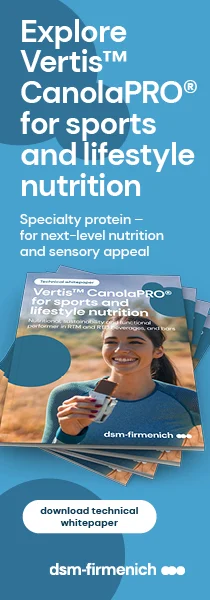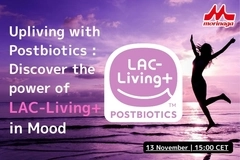Subsidizing food could save billions in medical costs, finds US study
17 Aug 2020 --- Subsidizing foods, such as nutrient- and fiber-rich Step One Foods products, instead of medications, can save an estimated US$24 billion for the US Medicare-insured population, according to a new US study. This first-of-its-kind examination shows that subsidizing dietary interventions, as proposed by Step One Foods founder and study author Dr. Elizabeth Klodas, can help prevent numerous heart diseases at their sources. Ultimately, it shows how insurance companies can avoid health issues as opposed to responding to them once prevalent.
Even though everyone is very familiar with the concept of “food as medicine” the space is amazingly nascent and empty, Dr. Klodas tells NutritionInsight. “Much of what we treat with drugs – high cholesterol, high blood pressure, high blood sugar – is caused in part or in whole by food. To me, if something is caused in part or in whole by food, step one should be to change the food. I always knew that would be the less expensive option. But I’m not even sure I anticipated how much money could be saved if we addressed the root cause of the problem rather than treating the downstream effects,” she details.

Step One Foods is a twice daily-dosed eating system with products formulated to help lower low-density lipoprotein (LDL) cholesterol. In this randomized controlled clinical trial, the foods were demonstrated to reduce LDL cholesterol by an average of 9 percent in 30 days, with some individuals experiencing nearly 40 percent LDL cholesterol reductions, without other dietary or lifestyle changes.
Study design
The study, to be published in the journal Current Cardiology Reports, analyzed the healthcare costs associated with having elevated LDL cholesterol levels among commercially insured people 50 years old and over, as well as Medicare users.
 High cholesterol is one of the main physiological factors contributing to cardiovascular disease.The analysis found those with high LDL cholesterol levels with commercial insurance incurred a medical cost of US$242 per member per month (PMPM), or 44 percent higher than those with normal cholesterol levels. Meanwhile, the Medicare population had a medical cost of US$449 PMPM, or 66 percent higher than those with normal cholesterol levels.
High cholesterol is one of the main physiological factors contributing to cardiovascular disease.The analysis found those with high LDL cholesterol levels with commercial insurance incurred a medical cost of US$242 per member per month (PMPM), or 44 percent higher than those with normal cholesterol levels. Meanwhile, the Medicare population had a medical cost of US$449 PMPM, or 66 percent higher than those with normal cholesterol levels.
The study also estimated the savings from mitigating the need for injectable cholesterol medications, called PCSK9 inhibitors, which cost nearly US$6,000 per person per year.
“What our analysis showed is that if you address the root cause, if you subsidize the food part. Thus, you can get significant savings of billions of dollars over subsidizing the medications. Even though insurers routinely subsidize lipid-lowering drugs like statins, many people can’t or don’t want to take them, leaving a large number of people at a persistently increased risk of cardiovascular events,” says cardiologist Dr. Klodas.
“Failing to address the root cause of high cholesterol, which for most people is their diet, makes no sense,” she continues. “This has created a scenario where heavily insurance-subsidized pharmaceuticals are utilized as the only clinical option to treat a condition driven in whole or in part by the consumption of unsubsidized poor quality foods. However, this study shows that managing hyperlipidemia at its source with Step One Foods can significantly lower healthcare costs and should therefore be eligible for insurance-based incentives.”
Addressing the root cause
Hyperlipidemia, or high cholesterol, is one of the main physiological factors contributing to cardiovascular disease (CVD), according to the World Health Organization (WHO). Other factors such as hypertension and high blood sugar or glucose are linked to underlying social determinants and drivers, such as aging, income and urbanization, WHO affirms.
Every Dark Chocolate Walnut Butter Bar contains 5 g of wholefood fiber and 1430 mg omega 3 fatty acids (Credit: Step One Foods).Step One Foods produces eight food products, each of which have scientifically optimized levels of four key nutrients that are the essential building blocks for heart health – phytosterols, omega 3 fatty acids, antioxidants and whole-food fiber. All products are made from real ingredients, like walnuts, almonds, flax meals, chia and fruit.
Patients are “far ahead” of their doctors in terms of diet education, notes Dr. Klodas. “Most can sense that something is not adding up – they’re taking all these drugs and getting perfect lab results but not feeling or looking any better. I’ve never met a patient who wants to take more drugs,but they are very open to dietary change to help themselves reduce the need for medications,” she explains.
This problem can start with the lacking education on diets medical students receive throughout their university curriculum.
“We need to change the paradigm. Medications and procedures are not the only things that insurance should cover. We need real science behind the use of food in clinical settings, which we have done. Next, we need [innovative] leaders in insurance to try something different because what we are doing is not working. I think we are not far away from this transformation,” Dr. Klodas concludes.
By Anni Schleicher















